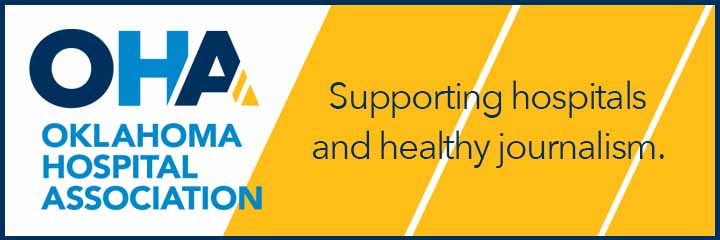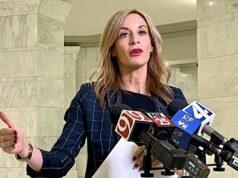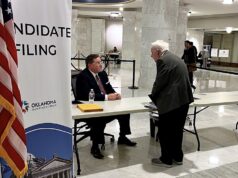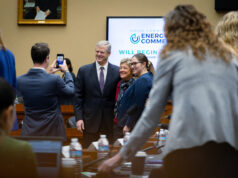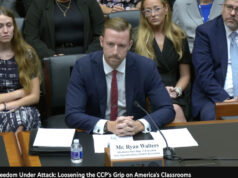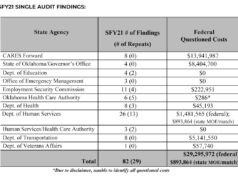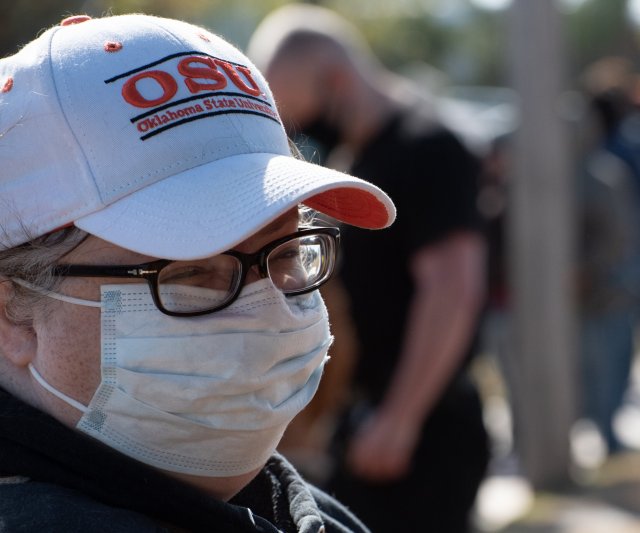
WASHINGTON — Oklahoma’s House members are working during Congress’ lame duck session to help constituents with two different federal programs that could release billions of dollars in aid. At the same time, the need for Congress to avert another government shutdown before Dec. 11 has rendered an additional economic stimulus package increasingly unrealistic.
The four Republican members of the delegation are calling for the release of $138 billion appropriated for the Paycheck Protection Program (PPP) that brought millions back to work after they were laid off due to the COVID-19 pandemic.
This story was reported by Gaylord News, a Washington reporting project of the Gaylord College of Journalism and Mass Communication at the University of Oklahoma.
Meanwhile, the delegation’s lone Democrat, U.S. Rep. Kendra Horn (D-OK5), lost her re-election bid but is working to secure the release of millions of dollars in disaster aid requested by Gov. Kevin Stitt to help fund cleanup and damage repairs from the October ice storm that left nearly 600,000 central Oklahoma electric customers without power.
“It is critically important to provide additional relief for struggling small businesses, starting with reopening access to leftover funds from the highly successful Paycheck Protection Program,” U.S. Rep. Tom Cole (R-OK4) said.
Other members of the state’s GOP delegation seconded Cole’s proposal while offering other ideas.
“As Oklahoma’s small businesses and rural hospitals continue to wade through the economic and health impacts of the coronavirus pandemic, Congressman (Frank) Lucas (R-OK3) believes it’s critical they’re provided the relief they need in order to continue to provide opportunities and care for our communities,” said a spokesman for Rep. Frank Lucas of the Third Congressional District.
Lucas’ spokesman reiterated support for an extension of the PPP as well as additional funding for the U.S. Department of Health and Human Services’ Provider Relief Fund.
“The good news is that there’s still $138 billion left over from the first round (of the PPP), which means we would not need to allocate any new funds to get that money into the hands of American small businesses and workers,” U.S. Rep. Kevin Hern (R-OK1) said. “There is strong bipartisan support to reallocate these funds for a second round of PPP loans.”
Additional stimulus package?
As many Americans are in need of another stimulus package, millions are on track to lose the jobless benefits extended by the springtime stimulus, according to a new study from The Century Foundation.
Meanwhile, the Dec. 11 government shutdown deadline nears. House and Senate leaders are hoping for an omnibus spending bill that will fund the government through 2021, as opposed to a short-term agreement.
Horn’s communications director, Chris MacKenzie, said agreeing on a spending bill is the outgoing congresswoman’s main priority. He said she continues to advocate for another bipartisan stimulus package and passage of the defense bill.
On Nov. 18, Horn wrote to President Donald Trump’s administration in support of Stitt’s request for a major disaster declaration after the ice storm in the state.
“Affected cities and counties have reported higher debris impacts than previous ice storms,” Horn wrote. “Oklahoma City alone estimates debris removal and cleanup cost will exceed $10 million and will not be completed until early March 2021. Federal disaster assistance will provide critical resources on our path to recovery from this natural disaster.”
At the same time, Cole said two other issues should be the focus for Oklahomans going into 2021.
“With encouraging data related to viable vaccine development, Congress must prioritize funding for the speedy delivery of vaccines while also continuing to support testing efforts,” he said. “(And) schools need additional relief to support teachers and students, ensuring they can either safely return to in-person instruction or continue distance learning effectively with bolstered rural broadband capacity or internet access.”

